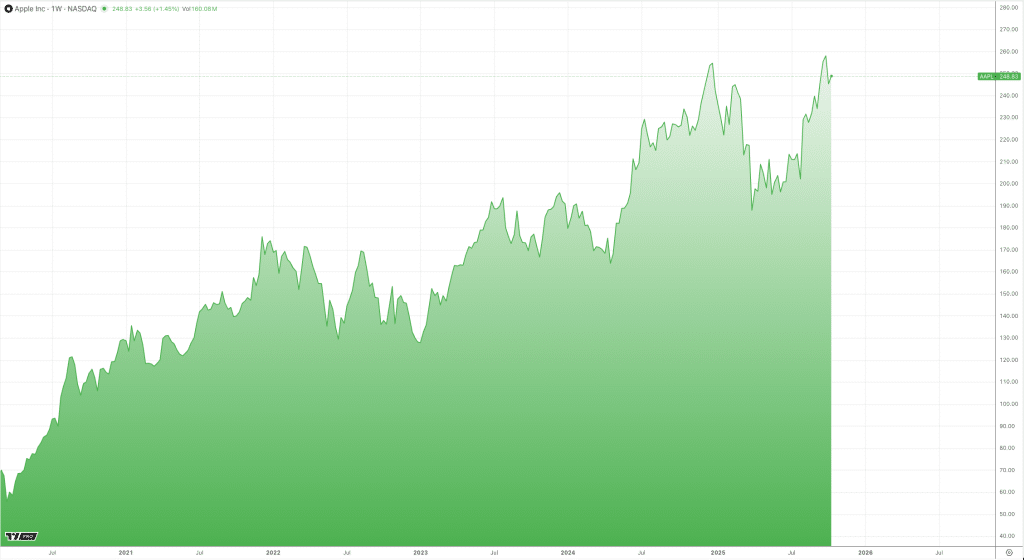The market has greeted Apple’s latest announcements with cautious optimism. Investors viewed the MacBook Pro update, powered by the M5 chip, as a sign that the technological cycle of Apple Silicon has stabilized and the company is ready to accelerate the pace of innovation. Apple shares remain resilient, and early moves in Dow Jones futures echoed a similar tone of steady confidence ahead of the broader trading session. The accumulation of large investors reflects concerns over weaker iPhone sales in China. The launch of the M6 could shift investors’ attention to Macs and AI integration, where margins traditionally exceed those in the mobile segment.Some funds view the Mac upgrade as a potential catalyst for share price growth, particularly given the rising competition in the laptop segment that supports local AI models. Unlike its competitors, Apple maintains vertical integration through its proprietary chips and macOS ecosystem. The company’s increasing focus on Apple Intelligence ensures long-term strategic stability, attracting institutional investors — especially as analysts prepare for the tech-heavy updates on the earnings calendar.Following the rumours, most of the segment experienced brief gains, reflecting expectations that the upcoming update will strengthen the company’s position in the premium PC market. While the reaction has been modest rather than driven by speculation, it underscores Apple’s reputation as a key driver of the technology sector.The company is gradually rebuilding its ecosystem, bringing Mac computing power closer to levels previously achievable only in cloud AI clusters. It is entering a phase where AI moves beyond a slogan to become a built-in feature across devices. The M5 delivers AI performance that is 3.5 times higher than its predecessor’s, while setting new benchmarks for energy efficiency and battery life in professional laptops.In parallel with the M5 release, Apple is already preparing a new generation of MacBook Pro with the M6 chip. These models will be Apple’s first step towards touchscreen OLED displays, which will drastically change the interaction with macOS. The company managed to deal with one of the major engineering challenges of touchscreen laptops — eliminating screen vibrations when tapped — through reinforced hinges and a redesigned case. Replacing the 2021 version, the new design will be thinner, lighter, and will finally remove the signature notch, making way for a sleek FaceTime camera cutout.In the long term, the company is considering integrating Face ID into laptops, which would be a further development of its biometric solutions following the introduction of Touch ID. For Apple, these steps are more than just a technical upgrade — they represent a return to the vision of personal, adaptive, and intuitive devices, which was once the central idea of Steve Jobs.At this time, the news about the release of a commemorative coin featuring the image of Jobs — presented by the U.S. Mint — carries significant symbolic meaning. It depicts the young Apple founder sitting cross-legged against the California hills — in the same simple way that has become synonymous with the philosophy of “do the things that matter”. The inscription on the coin, “Make something wonderful”, seems to mark the beginning of a new chapter in the company’s evolution: from the legendary Jobs presentations to the era of machine intelligence, now integrated in every Mac.Apple is not merely updating its product line — it is reigniting the internal drive that once sparked the technological revolution in Cupertino. And if the M5 has become a bridge to smart Macs, then the M6 and the touchscreen interface promise to return the company to the forefront of user-focused technology, where innovation reconnects with the human experience.

Cristina Macias is a 25-year-old writer who enjoys reading, writing, Rubix cube, and listening to the radio. She is inspiring and smart, but can also be a bit lazy.
